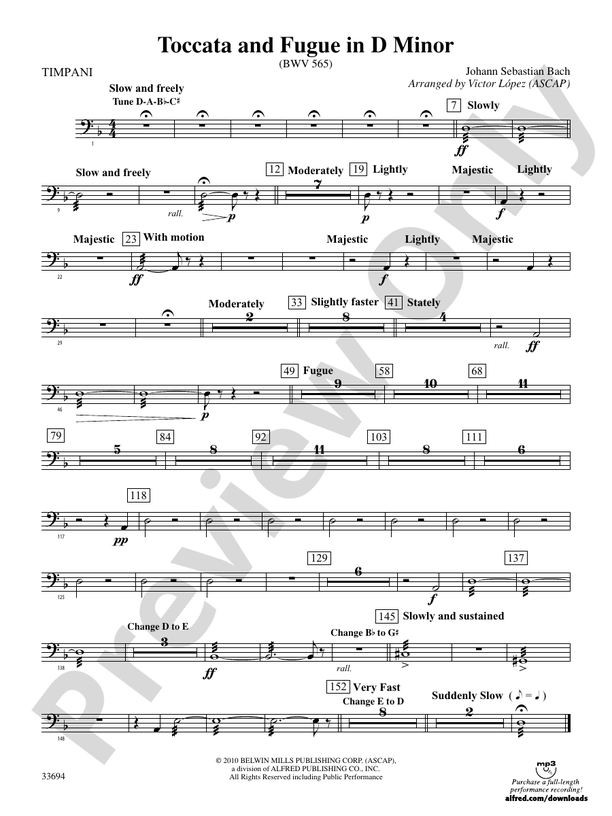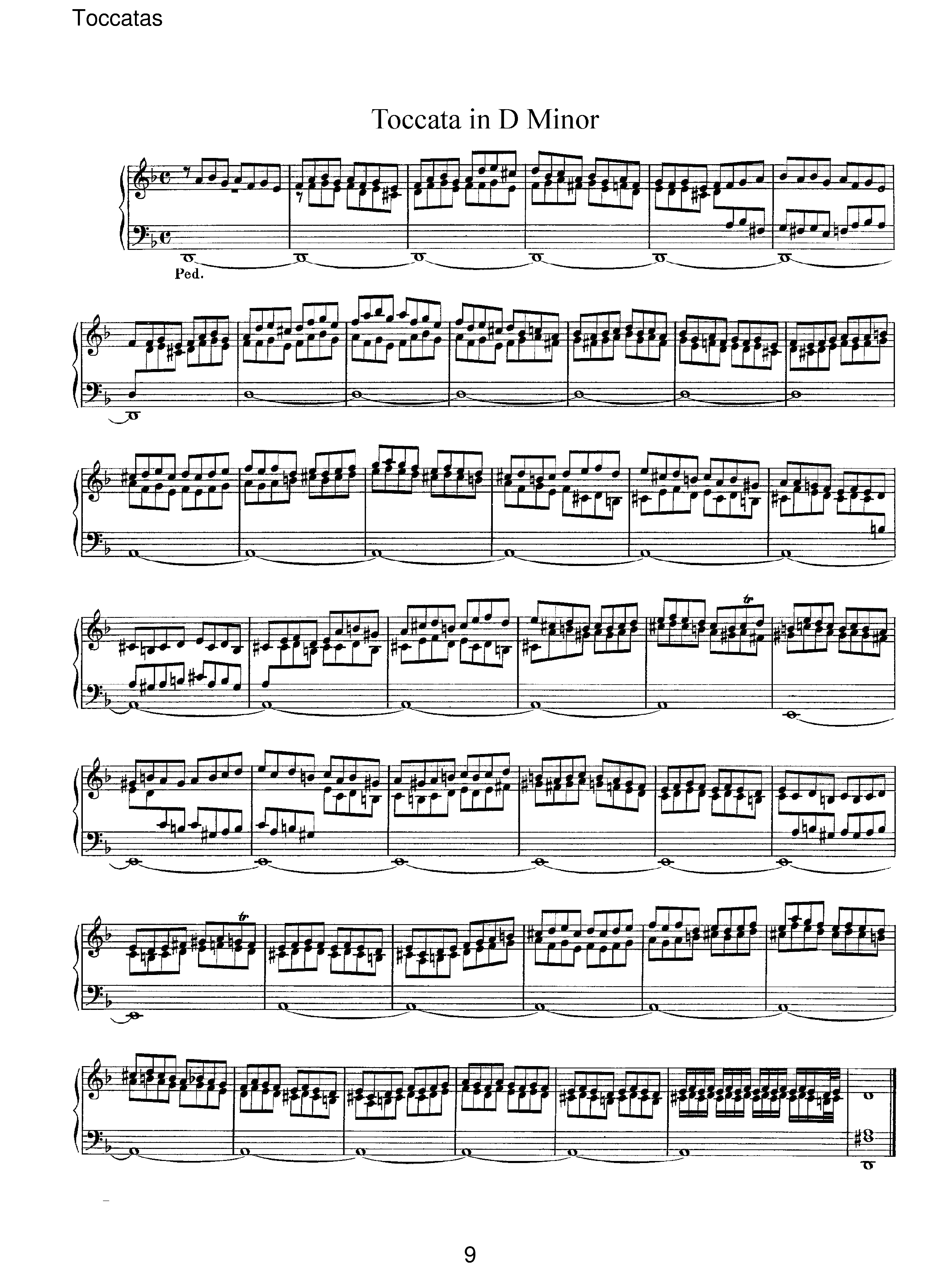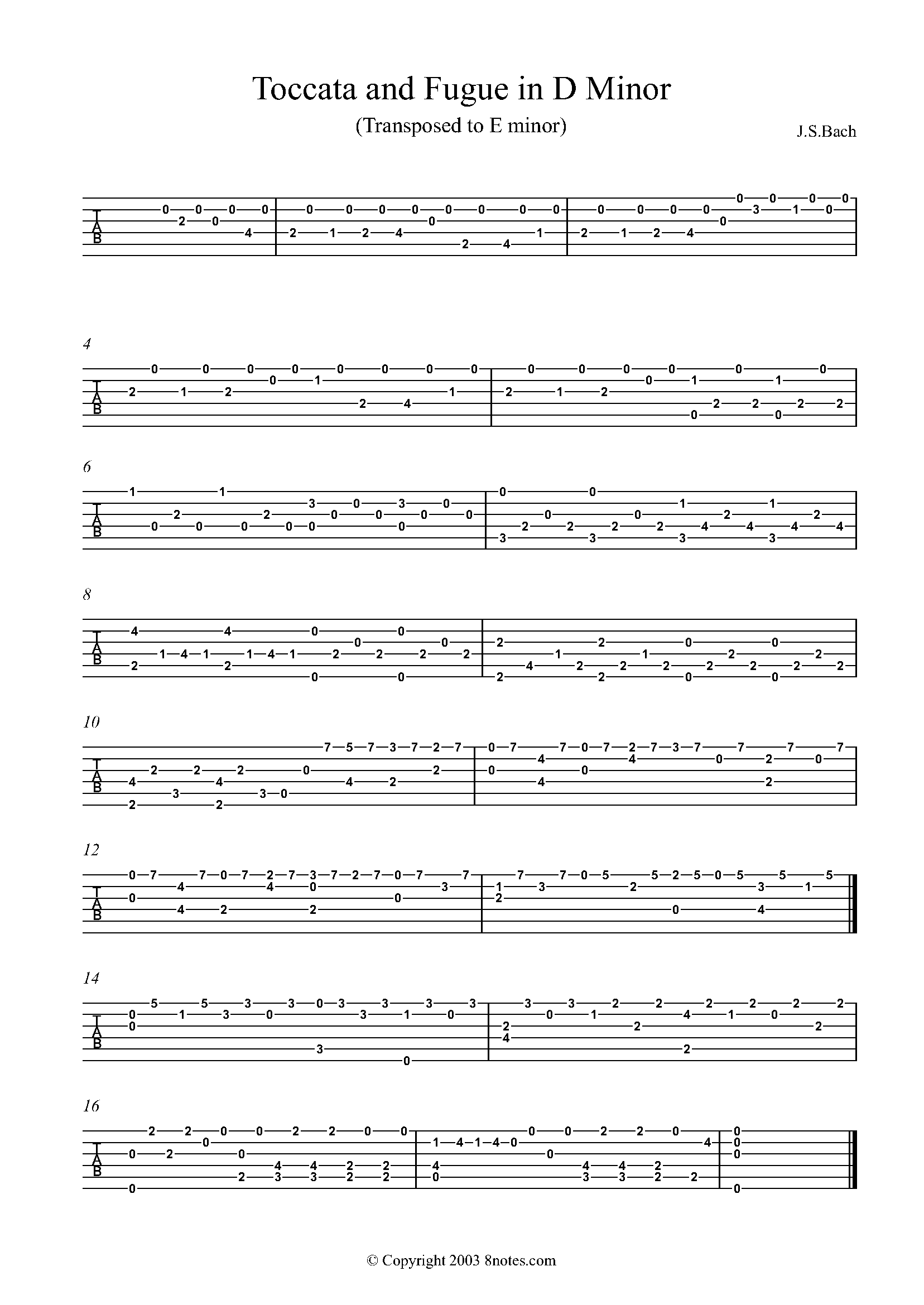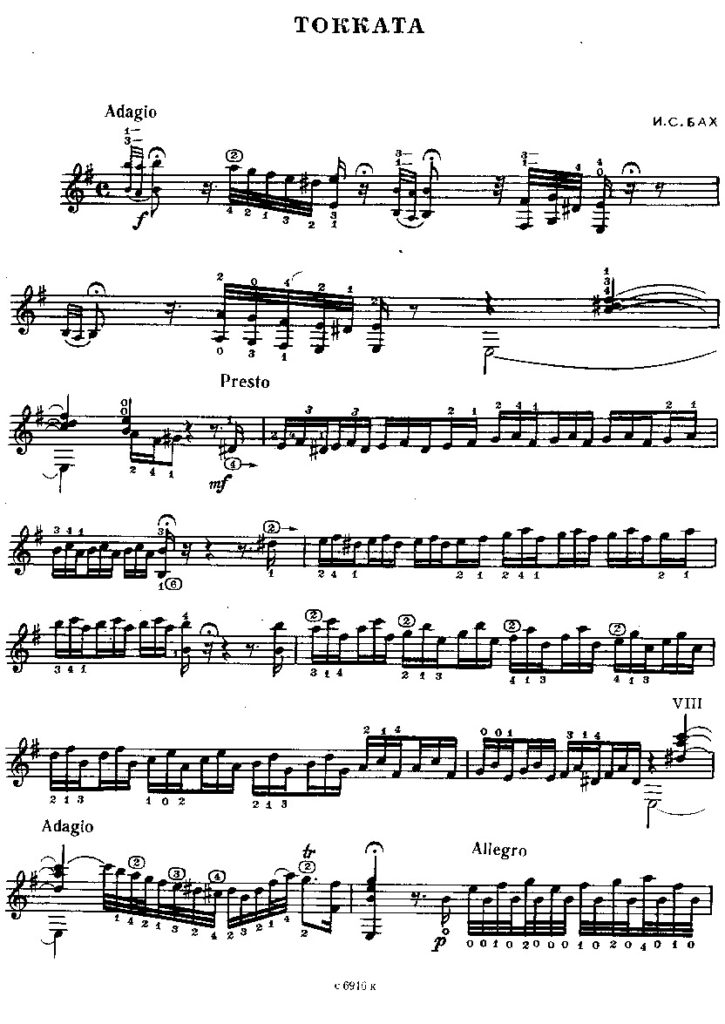Toccata And Fugue In D Minor Guitar

Ever heard that super dramatic, instantly recognizable organ piece that sounds like a haunted house convention? That's probably Toccata and Fugue in D Minor by Johann Sebastian Bach. Now, imagine that... on a guitar.
Sounds a bit bonkers, right? Like trying to fit a sumo wrestler into a Mini Cooper. But that's exactly what some daring guitarists have done, and the results are surprisingly awesome.
From Pipes to Picks: A Wild Translation
Bach originally wrote this masterpiece for the organ, an instrument capable of producing a sound that could shake the foundations of a cathedral. It's all about massive chords and booming basslines.
The guitar, on the other hand, is a much more delicate instrument. Its voice is generally softer, and its range is narrower. So, how can you possibly translate such a bombastic piece?
Well, that's where the magic of arrangement comes in. Clever guitarists have taken the original score and reworked it. They re-imagined it to suit the unique capabilities of the guitar.
The Challenges (and Hilarious Solutions)
One of the biggest challenges is the sheer number of notes. An organist can play multiple notes at once with their hands and feet.
A guitarist, however, only has ten fingers (unless they're secretly a mutant). Arrangers have to carefully choose which notes to keep, creating the illusion of the full sound.
Think of it like trying to explain the plot of "War and Peace" in a tweet. You have to be concise and creative!
Then there's the bassline. On the organ, it thunders. On a guitar, it's, well, a bit less thunderous. Some guitarists use special techniques, like drop tunings, to get a deeper, richer sound. Others even use 8-string guitars.
You can almost picture the guitarists huddled together, muttering, "How do we make this little thing sound HUGE?!"
Why Bother? The Unexpected Joy
So, why would anyone even attempt such a feat? Why not just stick to playing "Stairway to Heaven" (again)?
Because it's fun! It's a challenge! And it's a way to breathe new life into a timeless masterpiece.
Hearing Toccata and Fugue in D Minor on guitar is like seeing a familiar painting in a completely new light. It allows you to appreciate the piece from a fresh perspective.
More Than Just Notes: Feeling the Music
But the most important thing is the emotion. When a skilled guitarist tackles this piece, they don't just play the notes. They imbue them with feeling. They bring out the drama, the darkness, and the unexpected beauty of Bach's original vision.
It’s not just about technical wizardry, it is about connecting with the soul of the music. It’s about sharing that connection with an audience.
And that's why Toccata and Fugue in D Minor on guitar is so much more than just a novelty. It's a testament to the power of music to transcend boundaries and inspire creativity.
Next time you hear that iconic opening, think about the guitarist sweating it out. He/She is trying to channel the spirit of Bach with six (or eight!) strings. That's something worth appreciating.
So, go find a recording of Toccata and Fugue in D Minor on guitar. Let your ears be surprised! You might just discover a whole new dimension to a piece you thought you knew.
Who knew classical music could be so...metal?

















